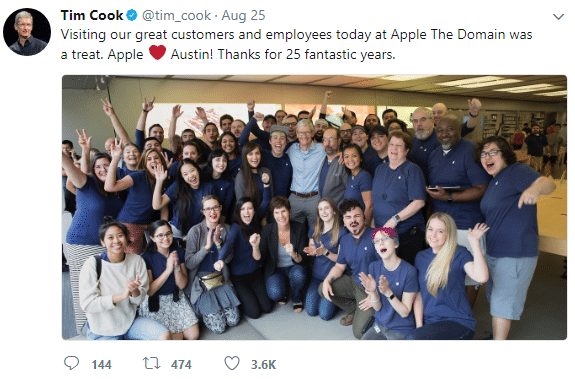Building a collaborative workforce is one of the most critical steps you need for long-term survival. When you have employees pulling in opposing directions or segments of the company with different priorities, it slows the business down and makes progress almost impossible to achieve.
 Photo by fauxels from Pexels
Photo by fauxels from Pexels
That’s obviously not what you want, and it’s in your best interests to ensure you do everything you can to improve and promote the right kind of collaboration among your teams and their members, even if doing so is a little easier said than done. One study finds that up to 86% of workforce failures come from a lack of collaboration and poor communication. Deloitte suggests that the lack of collaboration costs $ 1660 per employee per year. So, read on now to find out more.
Building a collaborative workforce
Highlight existing problems
First of all, you must take the time to identify and highlight the areas where you’re not achieving a collaborative workforce. Among the warning signs of poor collaboration are:
- teams suffer groupthink
- there’s little or no collect communication between teams
- no one volunteers to collaborate on an ad hoc basis
- a new hires’ ability to collaborate is not part of your hiring process
By auditing your workforce seeking out collaboration problems periodically, you detect where collaboration is failing, which is the first step towards fixing the problem.
Break down barriers to collaboration
There are many things inside your business that interfere with your employees’ efforts to pull together and work as a team. Fixing these barriers to collaboration must happen immediately. Some ways to breakdown barriers to collaboration include:
- Providing teams with context so they know how their efforts fit into the overarching goals of the business. By understanding their role in the business, employees are more willing to collaborate to achieve the goals of the organization. Ensure strategic communication between teams to avoid wasted effort and the resulting frustration that comes with it. For instance, maybe your digital team comes up with a great landing page only to find that the ad buyers didn’t use the proper keywords and the ads thus reducing the performance of the landing page and increasing costs.
- Lead by example. Creating a team spirit culture within the organization and displaying your own collaboration with others goes a long way towards building a collaborative workforce.
- Reduce the number of interactions required. Map out the collaborative process to ensure employees from different departments or functional silos have direct channels of communication versus having to communicate through supervisors. This improves communication, which helps in building a collaborative workforce.
- Allow for distributive decision-making. Instead of pushing all decisions to the top, push decision-making down to the employees in charge of implementing the decisions.
- Ensure your reward system is balanced such that everyone gets rewarded when the organization achieves improved performance.
Ensure there are trust and willingness to share ideas openly
It’s important to ensure there’s trust among your team and people don’t feel like their ideas are dismissed out of hand or stolen by others. You want to create an atmosphere in which people feel willing and able to share their ideas and discuss them openly. Without that, teamwork is impossible and creative ideas from your team members simply never come to the fore. The more ideas are shared and discussed, the better the outcomes you’ll achieve.
Keep unproductive time to a minimum
There are lots of activities in the workday that simply don’t yield productive outcomes. If you want to focus on being productive and having your team collaborate effectively, one of the things you should look for are opportunities to reduce unproductive activities. One of the most classic and easy-to-understand examples of this is cutting the number of meetings in your office so that you’re not wasting time sitting around doing not much at all. Let’s face it; lots of meetings are quite pointless.
Make sure everyone has a role to play
Everyone needs to have a role to play within the business and managers must recognize there are no small roles. In a collaborative workforce, everyone is a necessary (and valuable) element in the process of achieving the firm’s goals. If people feel like they’re being ignored or left out, or that their skills are not being properly utilized, they’re simply going to feel undervalued. As such, they’ll lack the motivation to participate in situations and group work. So, clearly articulate each person’s role and ensure they realize their role is important to the team; that’ll help motivate a lot of people.

Create platforms and systems for teamwork and collaboration
In order for your team to work together in a collaborative way, the right facilities and teamwork resources are needed. These collaborative solutions allow your team to work together across digital spaces and share information and documents more easily. Think about the options open to you and how you can harness them effectively when attempting to encourage better teamwork and build a collaborative workforce.
Find the positives in group failings and mistakes
Failures and mistakes are a learning opportunity. The only true failure is not learning from your mistakes. Hence, when things go wrong look for the positive learning experience as part of the outcome rather than assessing blame to individuals or groups of employees. The last thing you want is for your team to become demoralized and negative simply because a particular project didn’t go their way or because they experienced a setback.
To avoid situations like that, you must try to find the positives and learn from mistakes. There’s always a silver lining or at least something that you can learn from in order to benefit the business moving forward.
Set group goals
Setting goals is important in most workplaces, and if it’s something that your business commonly did on an individual basis, you might want to change to a system of goals that stresses the importance of teams and the entire organization in achieving goals.
One example is by setting goals that apply to the group, where everyone has accountability for achieving the goal. That way, everyone has not only their own individual work in mind but also the end goals of the larger group. That’s key because this is a team and not a set of individuals.
Encourage active listening
Finally, you must ensure that communication values listening as much as speaking. When we talk about business communication, we too often focus on the talking side of things. But listening is just as important. Each person on the team needs to feel as if other members truly listen to them and that their thoughts, feelings, and opinions are considered by the wider group at large. Actively listening to one another always yields better outcomes for the team.
Conclusion
Now that you have a better understanding of what you can do and what it takes to improve the collaboration inside your business, all that’s left for you to do is take action. The sooner you do that, the sooner you’ll get your business on a more positive track towards the success you feel you merit.
Business & Finance Articles on Business 2 Community
(33)








